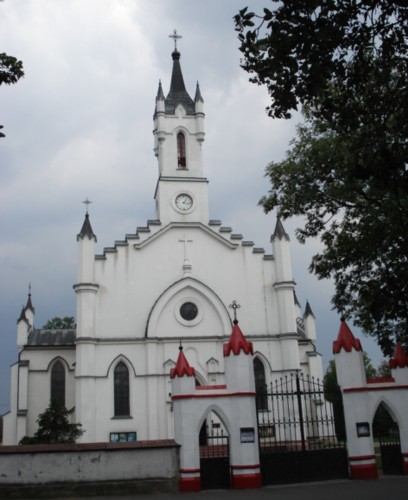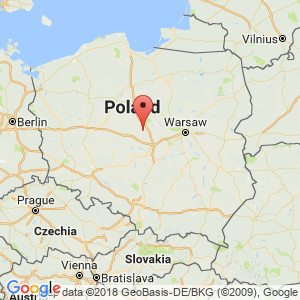Krośniewice

Virgin Mary's Ascension Church in Krośniewice
Distance
Population
4.648 (2007)
Location and history
Krośniewice is located in the northwest corner of the Łódź region, ie. in central Poland. The municipality belongs to Kutno powiat (district).
It is not known with certainty when and how the town of Krośniewice originated. The first sure announcement of the city's existence dates back to 1458, in which year Krośniewice as well as other major Polish cities contributed to armed infantrymen in the war against the Crusader Order. Already from the 15th century. there was a parish school in town; about his existence there is testimony from some of the school's students, who later became students at the Kraków Academy. Outside the city was a hospital chapel; next to this there was a poor house. The buildings in the city were made of wood and were confined to the grounds surrounding the square and the innermost parts of the exit roads.
In the mid-1600s, Krośniewice was also affected by the events of the Polish-Swedish War. The city was on one of the routes in which the armies moved, and was devastated and looted. In the 17th-18th centuries. was the city private property; under the owner's oversight, the city was led by a mayor and a city council.
As a result of the efforts of the owner, Karol Gomoliński’s, page, King Stanisław August, in 1775, granted a privilege to the city which included the right of weekly square days, namely on Mondays. However, it is not known whether this is an original issue or confirmation of a previous privilege.
At the 2nd partition of Poland in 1793, the area came under Prussia. As a part of “The Principality of Warsaw” and later “Kingdom of Poland” was the area from 1815 under Russian rule.
From 1817, an elementary school operated in the city. In 1870, a number of cities in the Warsaw government were demoted “settlements”, including also Krośniewice.
After Poland's re-establishment as an independent state after World War I, Krośniewice was granted its market town rights in 1926.
During the German occupation in World War II, ghettos were established in Kutno, Żychlin and in Krośniewice. This last occurred in May 1940. The ghetto was demolished in October 1942, after which the surviving Jews were taken to the nearby extermination camp in Chełmno nad Nerem. Of the city's inhabitants, over 1,200 people perished during the war, most of them Jews.
Today, the city has both a kindergarten, elementary school, middle school and a high school.
Tourist attractions
Selected attractions:
The museum
in the former classical-style inn, the first ground-walled building in the city.
The Rembieliński genealogical castle
with park facilities from the 2nd half of the 19th century.
Memorial to the First Józef Poniatowski
from 1814
Virgin Mary's Church of the Assumption
in neo-Gothic style from 1862-1872
synagogue
in Krośniewice from the first half of the 19th century.
Władysław Anders’ birthplace
Manager's residence from the 2nd half of the 19th century, the birthplace of General Władysław Anders (1892-1970)
Surrounding Area
Accommodation
Other Internet sites and sources
Translated into English by Google Translate. Spangshus.dk accept no liability for any errors or omissions in translation.
Map

Rating
Search
Most used tags
churches (205) Castles (86) Monasteries (79) Town walls (74) Lakes (71) Town halls (67) Rivers (65) Castles1 (62) Mansions (55) Museums (51) Regional museums (38) Town gates (36) Abbey churches (35) Castle ruins (30) Cathedrals (26) Forests (25) Health resorts (24) Mounds (23) Water sports (23) National parks (22)Click for all tags
Denne side er også tilgængelig på dansk. This page and contents is (c) Copyright 2018- www.spangshus.dk. Based on Inviator software by ISCA Software